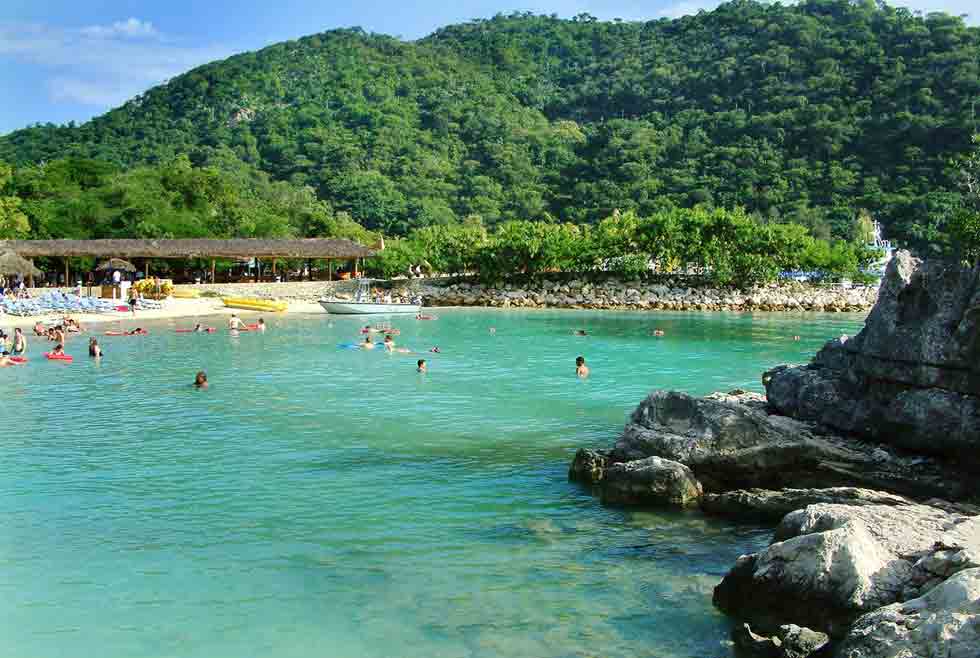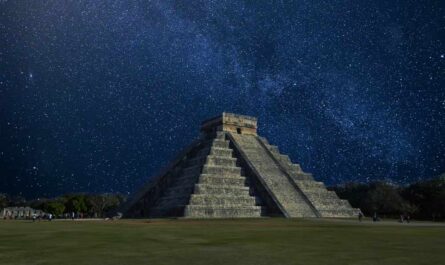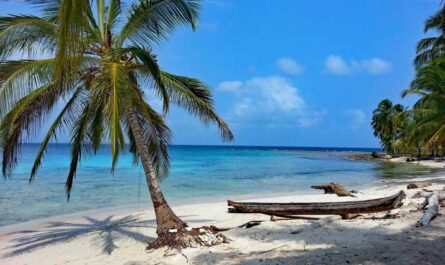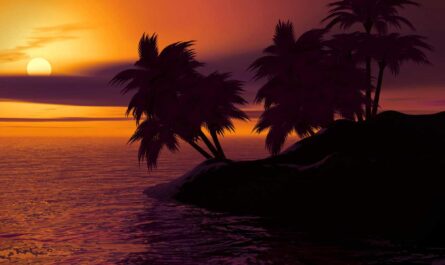Haiti fun facts are quite significant. Situated in the Carreabian, Haiti is a naturally affluent, earthquake-prone country that shares the island of Hispaniola with the Dominican Republic to its east. Interesting facts about Haiti surprise the tourists. Among the tourist spots, Citadelle la Ferrière, a mountaintop fortress, and the nearby ruins of Sans-Souci Palace, the baroque former royal home of King Henry I are notable along with its blue shores. In this article, I am going to talk about Haiti fun facts.
Haiti Fun, Interesting Facts: Culture, History, Travel
In the ethereal language of the indigenous Taíno Indians, the very name “Haiti” resonates with profound significance, translating to “mountainous country.” This linguistic heritage provides a poetic insight into the rugged topography that defines Haiti, painting a vivid picture of a land sculpted by nature’s forces and echoing the whispers of ancient civilizations.
1. Labadee’s Rich History and Royal Caribbean’s Lease
Labadee, an exquisite private resort nestled on the northern coast of Haiti, boasts a fascinating history and an exclusive lease agreement with Royal Caribbean International that extends until the year 2050. This tropical haven is not just a sun-soaked retreat but a place with roots tracing back to the 17th century when it was settled by Marquis de La Badie, a French visionary. The resort’s name pays homage to this historical figure, creating a unique connection between its modern-day allure and its centuries-old origins.
2. Haiti’s Economic Struggles: A Portrait of Poverty
Haiti stands as the paragon of economic destitution in the Western Hemisphere, marked by the lowest GDP per capita when assessed through the lens of purchasing power parity (PPP). Within the broader context of the Americas, Haiti retains its unenviable title as the most impoverished nation. The economic landscape is characterized by a stark contrast to the opulence that defines its neighboring nations, painting a poignant picture of adversity that the country grapples with daily.
3. Multilingual Heritage of Haiti
Haiti, a Caribbean nation with a rich cultural tapestry, boasts a linguistic diversity manifested through its official languages: French and Haitian Creole. French, a legacy of historical ties, is a unique characteristic setting Haiti apart. Interestingly, in the vast expanse of the Americas, Canada stands as the sole other independent nation sharing French as an official language, forging a linguistic connection across the ocean.
4. Haiti’s Historic Independence
Nestled in the rich tapestry of historical events, January 1, 1804, marks a pivotal moment in Haiti’s narrative as it celebrated its hard-fought independence from French colonial rule. This significant triumph catapulted Haiti into the esteemed position of being the second oldest independent nation in the Western Hemisphere, a distinction second only to the United States itself.
Over the span of the following century, Haiti’s political landscape witnessed a tumultuous ballet of power. A staggering revelation unfolded as more than 70 different dictators took turns steering the destiny of this resilient nation between the years 1804 and 1915. The pages of history unfold with a myriad of characters, each leaving an indelible mark on Haiti’s complex journey toward self-determination.
5. Historical Tapestry of Haiti
Haiti, a Caribbean jewel, has a rich historical tapestry woven over millennia. Inhabited since approximately 5000 BC, the land witnessed the emergence of farming villages around 300 BC. The Arawak people, skilled cultivators, crafted massive communities, with the Taino ultimately ascending as the dominant Arawak group. This early societal fabric set the stage for the intricate cultural mosaic that defines Haiti today.
6. Geographical Diversity of Haiti: A Tapestry of Borders and Neighbors
Situated in the heart of the Caribbean, Haiti boasts a unique geographic location that is both intriguing and diverse. To the east, it shares a border with the Dominican Republic, forming a symbiotic relationship that is both complex and historically significant. Adding to its geographic tapestry, Haiti finds itself in close proximity to the Turks and Caicos Islands to the north, a cluster of British Overseas Territories, further enhancing the mosaic of its surroundings. To the west, the enchanting allure of Jamaica beckons, while the northwest is embraced by the presence of Cuba, a nation steeped in cultural richness. These bordering nations not only contribute to the vibrancy of Haiti’s geographical identity but also play a role in shaping its cultural and historical narrative.
7. Haiti’s Gourd Connection: A Historical Currency and Symbolic Crop
In the tapestry of Haiti’s cultural and economic heritage, the gourd plant emerges as a central figure. Its significance extends beyond the realm of agriculture, delving into the very fabric of the nation’s fiscal identity. The Haitian currency, aptly named “gourdes,” traces its roots back to the visionary decision of President Christophe in 1807. Under his leadership, gourds were established as the cornerstone of the national currency, intertwining the tangible produce of the land with the intangible threads of economic stability.
8. U.S. Intervention: A Chapter of Occupation in Haiti’s History
The pages of Haiti’s history bear the indelible ink of intervention, notably in the form of U.S. President Woodrow Wilson’s decision in 1915. A tumultuous period unfolded as Marines were dispatched to Haiti with the mission to restore order. This intervention, however, transcended a mere quest for stability; it metamorphosed into a prolonged occupation. The shadows of U.S. troops loomed over the Republic of Haiti from 1915 to 1934, a chapter etched in the collective memory of the nation.
9. Land of Peaks and Primates: Rwanda’s Breathtaking Wildlife
Rwanda, a nation nestled in the heart of Africa, boasts an astonishing wealth of wildlife, creating a haven for nature enthusiasts and conservationists alike. The landscape is adorned with a diverse array of species, ranging from the playful antics of chimpanzees to the majestic presence of giraffes and elephants. The lush habitats are home to an astounding variety of creatures, including leopards, zebras, and an impressive collection of over 700 bird species, each contributing to Rwanda’s ecological tapestry.
Adding to this captivating natural spectacle is Mount Virunga, a majestic peak that stands as a testament to Rwanda’s commitment to biodiversity. This towering mountain is not just a geographical marvel; it houses one-third of the world’s remaining mountain gorillas, making it one of only two places on Earth where one can safely observe these endangered apes in their natural habitat. The significance of this sanctuary extends beyond its borders, portraying Rwanda as a steward of wildlife conservation on the global stage.
10. The Rich Biodiversity of Rwanda
Rwanda, a country nestled in the heart of Africa, boasts an unparalleled wealth of wildlife, creating a haven for nature enthusiasts and conservationists alike. Among its diverse inhabitants are the graceful chimpanzees, majestic hippos, towering giraffes, colossal elephants, elusive leopards, and striped zebras, each contributing to the vibrant tapestry of the nation’s ecosystems.
Notably, Rwanda stands as a birdwatcher’s paradise with over 700 species of birds, filling the skies with a kaleidoscope of colors and melodies. However, the crown jewel of Rwanda’s natural wonders lies in Mount Virunga, proudly hosting one-third of the world’s remaining mountain gorillas. This UNESCO World Heritage Site stands as a testament to Rwanda’s commitment to wildlife preservation, nurturing animals, and offering a rare opportunity for intrepid travelers to witness these endangered apes in their natural habitat.
11. Rwanda’s Volcanic Symphony: A Geological Marvel Unveiled
Rwanda’s topography is not only a canvas for diverse flora and fauna but also a stage for awe-inspiring geological wonders. The country is graced by the presence of five volcanoes — Karisimbi, Muhabura, Bisoke, Sabyinyo, and Gahinga — each contributing to the nation’s volcanic symphony. Among these giants, Karisimbi reigns supreme, standing tall at an impressive 4,507 meters above sea level, a testament to the geological forces that have shaped Rwanda’s landscape over millennia.
These volcanoes, with their towering peaks and majestic craters, add a surreal dimension to Rwanda’s already picturesque scenery. Beyond their geological significance, these volcanic formations play a crucial role in shaping the climate and ecology of the region, further underscoring the intricate balance between nature’s forces and Rwanda’s commitment to preserving its natural heritage.
12. Lakes and Rivers: Rwanda’s Aquatic Ballet
Rwanda, often celebrated for its mountainous terrain and abundant wildlife, also cradles a network of lakes and rivers, adding a harmonious aquatic dimension to its diverse landscape. The country boasts a staggering 23 lakes, each with its own unique charm and ecological significance. These water bodies, ranging from serene to majestic, weave through the fabric of Rwanda, contributing to its rich tapestry of natural wonders.
The numerous rivers that traverse the nation further enhance this aquatic ballet, providing sustenance to the surrounding ecosystems and fostering an environment conducive to diverse flora and fauna. From the tranquil shores of the lakes to the meandering paths of the rivers, Rwanda’s aquatic treasures mirror the country’s commitment to preserving not only its terrestrial wonders but also the delicate balance that extends into its watery realms.
13. The Rich Biodiversity of Rwanda: A Natural Treasure Trove
Rwanda, a jewel in East Africa, boasts a wealth of wildlife that contributes to its ecological diversity. The country is a sanctuary for a myriad of species, from the playful chimpanzees and majestic hippos to the graceful giraffes and mighty elephants. The landscapes come alive with the spotted coats of leopards, the striking patterns of zebras, and the vibrant wings of over 700 bird species. However, the real crown jewel lies in Mount Virunga, a sanctuary for one-third of the world’s remaining mountain gorillas. Remarkably, it stands as one of the rare places on Earth where adventurous souls can witness these endangered apes in their natural habitat, adding a touch of rarity and wonder to Rwanda’s already rich natural tapestry.
14. Haiti’s Exports and Agriculture Diversity
Haiti, beyond its well-known struggles, stands as a nation not just known for its socio-political challenges but also for its diverse exports. Coffee, oils, and cocoa are notable contributors to Haiti’s economic landscape. These commodities not only showcase the country’s agricultural richness but also contribute to its international trade presence. In the intricate tapestry of global commerce, Haiti’s export portfolio paints a picture of resilience and determination.
15. Volcanic Majesty of Rwanda
Delving into Rwanda’s geographical wonders, the country is graced by the presence of five awe-inspiring volcanoes—Karisimbi, Muhabura, Bisoke, Sabyinyo, and Gahinga. Among these majestic peaks, Karisimbi reigns supreme, piercing the sky at an impressive altitude of 4507 meters above sea level. The volcanic landscape, shrouded in mist and mystery, adds a dramatic backdrop to Rwanda’s natural splendor. These volcanoes not only contribute to the country’s scenic beauty but also play a crucial role in shaping the region’s ecological diversity, making Rwanda a unique destination for those seeking both adventure and environmental marvels.
16. The Origin of Zombies in Haitian Culture
The term “zombie” finds its roots in the haunting history of Haiti, where enslaved people sought solace in the belief that death would liberate them, transporting their spirits back to Guinea or Africa as a form of afterlife emancipation. This concept emerged as a coping mechanism during a dark period of history when suicide among slaves was tragically prevalent. However, a chilling twist awaited those who took their own lives, as it was believed they would be condemned to an eternity as soulless, undead slaves haunting the very plantations where their earthly suffering occurred.
17. Rwanda’s Aquatic Symphony
Beyond its terrestrial wonders, Rwanda’s aquatic realm unfolds with 23 captivating lakes and a network of meandering rivers. Each lake tells a tale of ecological richness and provides a serene sanctuary for a myriad of aquatic species. The shimmering waters mirror the surrounding landscapes, creating breathtaking vistas that captivate the beholder. Additionally, the numerous rivers crisscrossing the country contribute to the vitality of Rwanda’s ecosystems, fostering a delicate balance that sustains both flora and fauna. From the tranquil shores of Lake Kivu to the meandering paths of the Akanyaru River, Rwanda’s aquatic symphony adds yet another layer of enchantment to this African gem.
18. Haiti’s Dimensions and Topographical Grandeur
Diving into the geographical details, Haiti, encompassing 27,750 square kilometers, unfolds as a land teeming with historical significance and natural wonders. Comparatively smaller than the state of Maryland yet rivaling the expanse of Vermont, Haiti stands as a testament to resilience and cultural richness. Moreover, what sets Haiti apart is its claim to being the most mountainous country in the Caribbean, a topographical marvel that shapes not only its landscapes but also the unique character of its people. The undulating hills and peaks stand as silent witnesses to the nation’s tumultuous past and vibrant present, etching a distinctive silhouette against the Caribbean horizon.
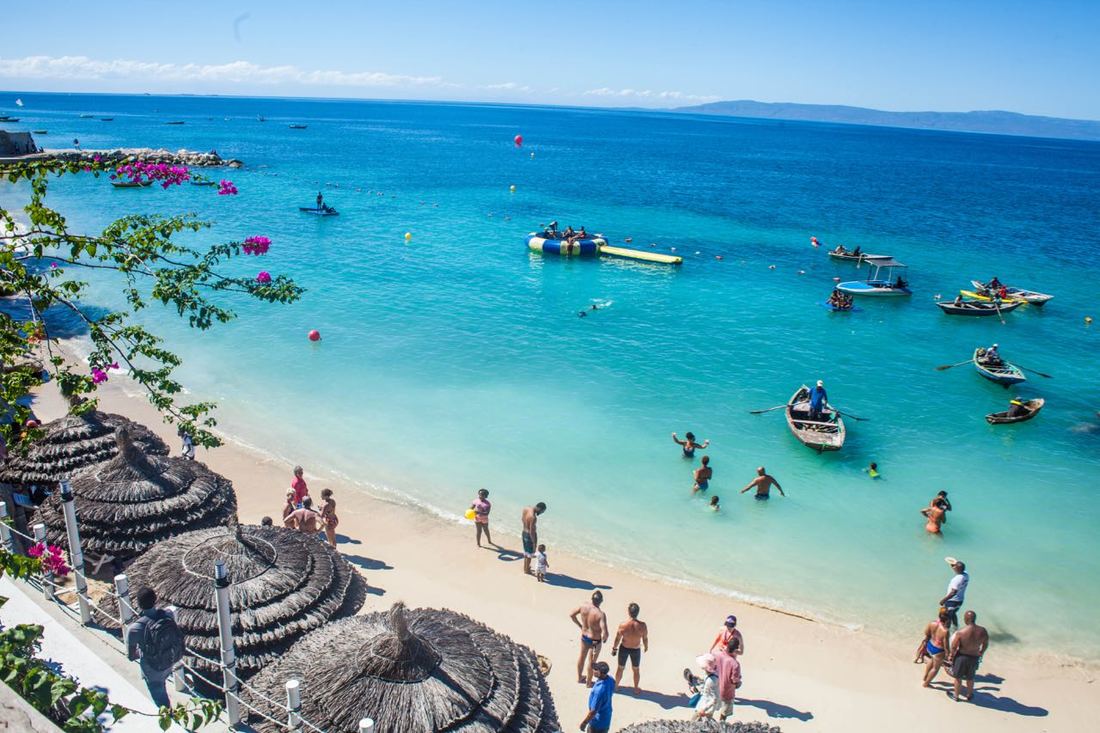
19. Environmental Challenges and Deforestation in Haiti
Delving into Haiti’s environmental history unveils a narrative of both beauty and distress. Once adorned with lush, verdant forests, Haiti has grappled with the aftermath of extensive deforestation. The landscape, marred by colonial-era land clearances and subsequent tree felling for charcoal production, now faces heightened vulnerability to environmental threats. The consequences are stark, with increased susceptibility to floods and mudslides, painting a somber picture of the delicate balance between human activities and nature.
20. Haiti’s Unconventional Sporting Passion
Beyond the challenges and environmental issues, Haiti reveals a unique facet of its culture through a rather unconventional sporting passion. Cockfighting, a sport banned in many nations, takes center stage in Haiti’s sporting scene. Roosters, revered as more than mere animals, play a pivotal role not just in this controversial sport but also in the cultural and spiritual domain. These feathered creatures, symbols of strength and vitality, find themselves intricately woven into the fabric of voodoo ceremonies, adding layers of complexity to Haiti’s cultural tapestry.
21. Rwanda’s Majestic Volcanoes: A Symphony of Geological Wonders
The dramatic topography of Rwanda is further accentuated by its five impressive volcanoes—Karisimbi, Muhabura, Bisoke, Sabyinyo, and Gahinga. Among these volcanic giants, Karisimbi reigns supreme, soaring to an impressive 4507 meters above sea level. Each volcano contributes to the country’s unique geological character, creating a landscape that is not only visually stunning but also tells a story of the Earth’s forces at work. The very mention of these volcanoes evokes a sense of awe, as they stand tall, silent guardians over the diverse ecosystems that flourish on their slopes.
22. Rwanda’s Aquatic Splendor: Lakes and Rivers in Abundance
Beyond its lush landscapes and towering volcanoes, Rwanda is also adorned with 23 lakes and a network of numerous rivers. These water bodies crisscross the country, contributing to its ecological richness and providing sustenance to diverse flora and fauna. The lakes reflect the changing hues of the sky, creating picturesque scenes that add to the overall allure of Rwanda. Meanwhile, the rivers carve their way through the terrain, shaping the land and fostering life along their banks. The aquatic symphony of Rwanda, composed of its lakes and rivers, adds yet another layer of enchantment to this African gem, showcasing the country’s harmonious blend of natural elements.
23. Haiti’s Enduring Legacy: A Pioneering Nation in the Western Hemisphere
Unveiling a historical tapestry woven with resilience and determination, Haiti proudly claims the title of the second oldest independent nation in the Western Hemisphere, following only the United States. This fact is not merely a chronological milestone; it is a testament to the spirit of independence that has shaped Haiti’s destiny, carving a unique identity in the narrative of nations.
24. A Chapter of Intervention: The US Presence in Haiti (1915-1934)
Amidst the pages of Haiti’s complex history, a chapter unfolds that narrates the intrusion of external forces onto its sovereign soil. From 1915 to 1934, the United States, under the leadership of President Woodrow Wilson, orchestrated an invasion and occupation of Haiti. This intervention was prompted by concerns over the potential impact of instability in Haiti on American industrial and political interests. The interplay of geopolitics and the quest for stability during this period painted a nuanced picture of Haiti-US relations, leaving an indelible mark on the nation’s trajectory.
25. Enigmatic Haitian Heritage
Haiti, a nation etched with a tumultuous past, possesses a solitary UNESCO World Heritage site—the majestic Citadelle and Sans Souci. These historic monuments stand as remnants of the early 19th century, a pivotal era when Haiti boldly proclaimed its independence. The very stones of Citadelle echo the struggles and triumphs that shaped the nation’s destiny during a transformative period.
The Citadelle, standing proudly as the largest fortress in the Western Hemisphere, is a testament to Haiti’s resilience and determination. Its colossal walls narrate a tale of defiance against colonial oppression and the unyielding spirit that fueled the fight for freedom. The echoes of the past resonate within the fortress, serving as a tangible link to the epoch when Haiti asserted its identity amidst the tumult of history.
26. Spanish Echoes on Hispaniola
A historical odyssey unfolds on the island of Hispaniola, where the vestiges of Spanish colonization intertwine with Haiti’s narrative. The seeds of colonization sown by Spain took root swiftly, casting a shadow that would endure through the annals of time. However, the historical pendulum swung, and in 1697, Spain relinquished the western expanse of Hispaniola to France—a momentous transfer of power that would redefine the destiny of the region.
The renamed Saint-Domingue, under French rule, emerged as a crucible of cultural amalgamation and societal transformation. The echoes of Spanish influence, though fading, lingered as Haiti navigated its course through a complex tapestry of colonial legacies. The island bore witness to a nuanced dance of power, a historical choreography that shaped Haiti’s destiny and character.
27. Tap Tap Tales: Vibrant Commutes and Communal Journeys
Embark on the vibrant streets of Haiti, and one encounters a unique mode of public transportation—the Tap Tap. Beyond its functional purpose, the Tap Tap is a kaleidoscopic expression of the Haitian way of life. Brightly painted buses, school buses, or trucks adorned with an array of colors serve as shared taxis, navigating the bustling thoroughfares.
The distinctive moniker, “Tap Tap,” finds its origin in a simple yet ingenious practice: passengers signal their desired stops by tapping on the sturdy metal frame. These vehicles, bound by fixed routes, embrace a communal spirit, waiting to depart until every seat is occupied, and allowing riders the freedom to alight at any juncture. In the tapestry of Haiti’s transportation, the Tap Tap is not just a mode of conveyance but a moving canvas reflecting the rhythm and vibrancy of the nation.
28. Haiti Fun Facts: Navigating the Streets with a Tap and a Tap
Amidst the historical intricacies and cultural nuances of Haiti, an engaging facet surfaces—the Tap Tap phenomenon. This unique form of transportation not only stitches together the diverse landscapes of the country but also weaves a colorful narrative of communal journeys. As passengers tap to signal their stops, the streets of Haiti echo with a rhythm that transcends the mundane act of commuting, transforming it into a collective dance of destinations and connections.
29. Dialing into Haiti: Unveiling the Code of Connectivity
In the intricate web of global communication, Haiti stands distinguished by its unique international dialing code: +509. This numeric insignia serves as a key to unlock the channels of connectivity with this Caribbean nation, allowing individuals worldwide to bridge the gap and engage in conversations that traverse borders. Beyond its practical utility, +509 becomes a symbol of Haiti’s interconnectedness with the rest of the world, embodying the nation’s openness to communication and exchange on the global stage.
30. Land Measurement Marvels: Haiti’s Stature in Caribbean Magnificence
When it comes to land measurement, Haiti proudly claims the title of being the third-largest country in the Caribbean. This accolade is no small feat, positioning Haiti in the esteemed company of regional giants. Surpassing all but two of its Caribbean counterparts, Haiti takes its place after the expansive landmass of Cuba and the neighboring Dominican Republic. This intriguing fact not only speaks to the sheer size of Haiti but also hints at the diverse landscapes and ecosystems that unfold within its boundaries. From majestic mountains to coastal wonders, Haiti’s landmass is a canvas painted with strokes of natural grandeur, inviting exploration and admiration.
31. Pioneering Black-Led Republic
In a seismic shift during the early 19th century, Haiti etched its name in history as the world’s first black-led republic. This monumental feat unfolded as the nation boldly cast off the shackles of French colonial control and the abhorrent chains of slavery. The echoes of this courageous act still reverberate, as Haiti’s struggle for freedom remains an indelible mark on the global narrative of liberty and self-determination.
32. Geographical Independence
Nestled in the Caribbean, Haiti stands as an independent nation, proudly occupying the western third of the island of Hispaniola. This geographical jewel is embraced by the azure waters of the Caribbean Sea on one side and the boundless expanse of the North Atlantic Ocean on the other. The unique positioning of Haiti not only influences its climate but also shapes its cultural identity, making it a captivating blend of influences from both the Caribbean and the broader global arena.
33. Haiti’s Tourism Tapestry
Beyond the echoes of its revolutionary past, Haiti emerges as a vibrant player in the realm of tourism, weaving an enticing narrative that draws nearly a million visitors, most notably through the grand portals of cruise ships. Labadee, a coastal gem situated on Haiti’s northern shores, emerges as a focal point for these maritime wanderers, a private resort leased to the maritime behemoth Royal Caribbean International until the year 2050.
Labadee’s name dances in history, a tribute to Marquis de La Badie, a French pioneer who etched the first chapters of settlement in the 17th century. The evolution of Labadee’s nomenclature, a subtle yet deliberate modification to “Labadee,” reflects a cultural crossroads, an adjustment aimed at harmonizing with the linguistic nuances of English speakers. This coastal haven thus stands as a testament to Haiti’s resilience, where history, commerce, and linguistic fluidity converge.
34. Tragedy and Resilience in Haiti
The seismic echoes of a catastrophic event reverberated through Haiti in January 2010 when a devastating 7.0 magnitude earthquake struck just 14 miles west of the nation. The epicenter’s proximity to the capital, Port-au-Prince, led to widespread destruction, leaving in its wake a city in ruins. The human toll was staggering, with an estimated loss of life exceeding a heartbreaking 300,000 people. This seismic catastrophe not only reshaped the physical landscape but also tested the indomitable spirit and resilience of the Haitian people.
35. Geographical Charms of Haiti
Beyond the socio-linguistic facets and seismic challenges, Haiti’s geographical allure is a captivating narrative. The terrain unfolds as a rugged, mountainous canvas, painting a picture of nature’s raw beauty. Amidst this topographical drama, sandy beaches punctuate the landscape, offering a serene contrast to the formidable mountains. The juxtaposition of rough, challenging terrain with the allure of pristine sandy shores creates a mosaic of exploration, inviting curious souls to delve into Haiti’s diverse and picturesque landscapes.
36. Voodooism in Haiti: A Tapestry of Faith and Tradition
Within the cultural tapestry of Haiti, a unique strand weaves through the fabric of its history — Voodooism, or Haitian Vodou. This spiritual tradition, nurtured in the crucible of the 17th and 18th centuries, serves as a testament to the resilience and syncretism embedded in the Haitian identity. The official religion draws inspiration from ancestral spirits and patron saints, creating a complex belief system that defies easy categorization. A prevailing adage encapsulates the diverse spiritual landscape, asserting that Haitians embody a paradoxical blend of “70% Catholic, 30% Protestant, and 100% Vodou.” This syncretic fusion reflects the multifaceted nature of religious practices, offering a glimpse into the intricacies of Haitian spirituality. Kyte: Rental Cars On Demand. Delivered To Your Door.
37. Navigating the Geographical Coordinates of Haiti: A Precise Location
Situated at the geographic crossroads of 18.5333° N latitude and 72.3333° W longitude, Haiti’s coordinates pinpoint its exact location on the world map. These geographical markers serve as the nexus of the nation’s topography, encapsulating the diverse landscapes that shape its identity. Beyond mere numerical values, these coordinates become symbolic, representing a fixed point in space that holds the essence of Haiti’s geographical significance. Each degree and minute echoes the tales of resilience, culture, and history that converge in this Caribbean nation, offering a precise insight into the heart of Haiti.
More Interesting Articles
- 60 Interesting Facts about Kathmandu City Nepal
- 30 Interesting Facts About the Flag Of Scotland
- 15 Interesting Fun Facts – Everland Theme Park, South Korea
- 75 Awesome Washington DC USA Interesting Fun Facts
- 70 Archipelago Ibiza Spain Interesting Fun Facts Trivia
- 33 Gyeongbokgung Palace South Korea Interesting Fun Facts
- 29 Andaman and Nicobar Islands Interesting Fun Facts
- 40 Irish Saint Patrick’s Day Interesting Fun Facts
- 25 Interesting Fun Facts About Nami Island South Korea
- 89 Wonders of the World One Must See in Lifetime
- Cultural Wonders of the World – A Complete List
- 22 Pashupatinath Temple Nepal Interesting Fun Facts
- List of 54 Greatest Empires in Entire History Timeline
- 100 United Nations Facts – The UN Basic Facts for All
- 100 Plateau of Tibet Facts to Astonish You
- 200 Kazakhstan Fun Facts Everyone Should Know
- 125 Interesting Facts about Hungary You Must Enjoy
- 200 Interesting Facts about Poland for Travelers
- 200 Cool Facts about Germany to Surprise You
